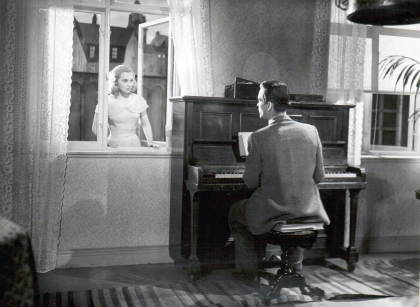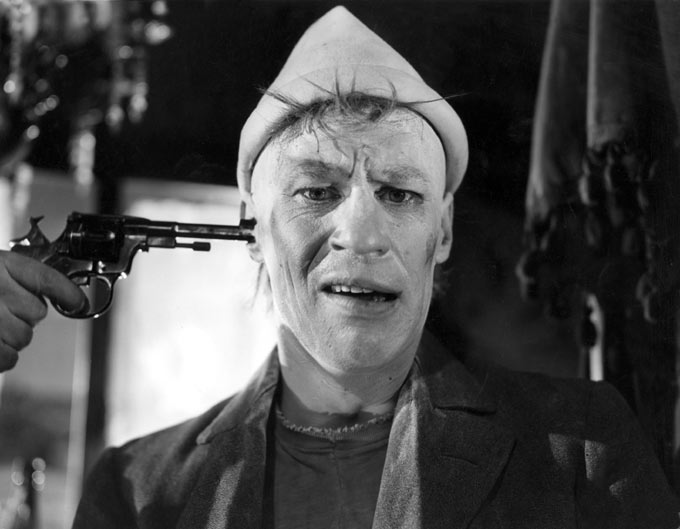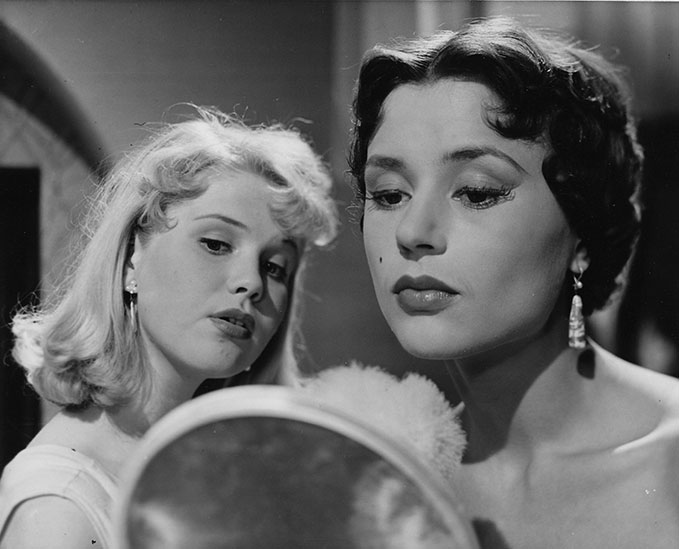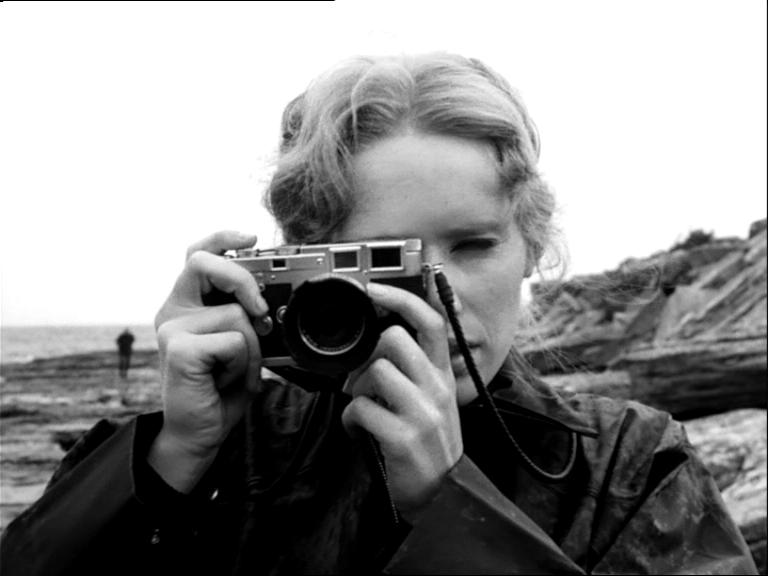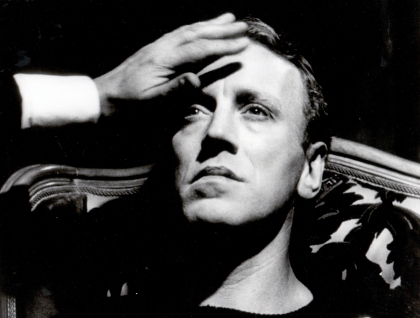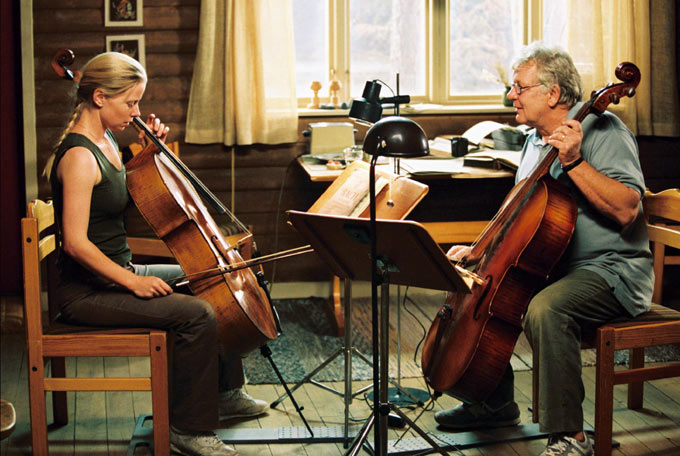Art and Artists
The artist is the most ubiquitous of all Bergman's characters.
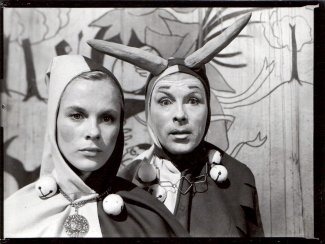
'Now, to be completely honest, I regard art (and not only the art of the cinema) as lacking importance.'Ingmar Bergman, The Snakeskin (1965)
Art and Artists
In The Seventh Seal, Jöns the squire visits a church where the celebrated painter Albertus Pictor is working on a mural. It would hardly seem an exaggeration to regard this minor scene as an allegory for Ingmar Bergman's entire view of art: Albertus represents Bergman himself, whereas Jöns, blasé and sceptical, represents his audience.
Given Bergman's well-established reputation as a 'difficult' director, one who typifies the art-house tradition, etc., it may either be naivety, teasing, or even false modesty on his part to take upon himself so obviously and often the role of entertainer, a purveyor of amusement that is temporarily imbibed by a preoccupied audience before they go home to the drudgery of their everyday lives. And yet Bergman is in earnest. He has never pretended to be anything more than the jugglers and clowns that populate his films, whether a circus manager (Albert Johansson in Sawdust and Tinsel), an itinerant hypnotist (Albert Emanuel Vogler in The Magician) or a writer of popular fiction (David in Through a Glass Darkly). Or, for that matter, the prostitute Birgitta-Carolina in Prison. (On numerous occasions Bergman referred to himself as an 'audience whore').
In his 1954 essay The making of film Bergman recalls:
There is an old story of how the cathedral of Chartres was struck by lighting and burned to the ground. Then thousands of people came from all points of the compass, like a giant procession of ants, and together they began to rebuild the cathedral on its old site. They worked until the building was completed – master builders, artists, laborers, clowns, noblemen, priests, burghers. But they all remained anonymous, and no one knows to this day who built the cathedral of Chartres. [...] Thus if I am asked what I would like the general purpose of my films to be, I would reply that I want to be one of the artists in the cathedral on the great plain. I want to make a dragon's head, an angel, a devil – or perhaps a saint – out of stone. It does not matter which; it is the sense of satisfaction that counts. Regardless of whether I believe or not; whether I am a Christian or not, I would play my part in the collective building of a cathedral.
Artist Types in Bergman
In at least 25 of Bergman's films (and in most of his own plays), artists of some kind play an important part. Writers and painters do occur (Tomas in Prison, Johan Borg in Hour of the Wolf), yet more often than not the artists in question are performers: actors (Elisabet Vogler in Persona, Emilie Ekdahl in Fanny and Alexander), dancers (Rut in Thirst, Marie in Summer Interlude) or musicians (Bengt in Music in Darkness, Charlotte in Autumn Sonata). Very often these artists are exponents of more popular forms of entertainment, such as the circus (Sawdust and Tinsel) or vaudeville (The Ritual). Apart from those who are more or less professionals, there are also several characters whose involvement in the arts is on an amateur basis (Karin and Minus put on a play in Through a Glass Darkly, Edvard Vergérus plays the flute in Fanny and Alexander). By broadening the concept of artist to one who performs for others, one could include the many clergymen and prostitutes who feature in Bergman's films.
What conclusions can one draw from this? It might of course be that Bergman, who so often bases his work on his own life, is using, in a lightly disguised form, his own art and view of art as his subject matter. Many of the artists in his films can be regarded as partly autobiographical (perhaps this is why they are so often, just like Bergman the stage director, the interpreters of other people's work). But one could also argue that Bergman is using art and its practitioners as a metaphor. He appears to have taken to heart Shakespeare's view that 'all the world's a stage'. The art itself is seldom given much exposure; we rarely see how a work is developing, or study a particular interpretation. We learn that Johan in Hour of the Wolf is an artist, similarly that Emilie Ekdahl in Fanny and Alexander is an actress. We hear them talking about their work, yet we scarcely see their paintings or performances.
Instead, art and artists appear to provide Bergman with a device for exploring the interplay between people in general. In Bergman's films, the world of the arts (with its hierarchies and its public nature) and of communication itself (with its senders, receivers, interpreters, etc) becomes a reflection of society. Bergman appears to use 'art as institution' as a metaphor for his more pressing theme of the lack of communication between people. In this way art is one of three recurrent institutions in Bergman's films, each with a similar purpose (the other institutions are religion and the family).
Basically there are two types of artists in Bergman, sometimes interchangeable: the humiliated artist, and the vampire-like artist. Obvious examples of the first category are Frost in Sawdust and Tinsel and Albert Emanuel Vogler in The Magician. Examples of the second kind are David in Through a Glass Darkly, Elisabet Vogler in Persona or Elis Vergérus in A Passion. Examples of characters who combine both qualities are Jan and Eva Rosenberg in Shame, and the band of performers in The Ritual.
The Humble Artist
As a study of the artist's profession in general, and Bergman's in particular, The Magician is in many ways a key film. The main character, Albert Emanuel Vogler, claims to perform magic, which is challenged by his bourgeois audience, including Consul Egerman, the town medic Dr Vergerus, and Police Chief Starbäck. Despite being sceptical of Vogler's alleged supernatural powers, they are irreparably fascinated.
On many occasions, Ingmar Bergman spoke of the possibility of film, as he refers to in The Snakeskin, 'of corresponding with the world around me in a language that is literally spoken from soul to soul, in terms that avoid control by the intellect in a manner almost voluptuous'. In this sense, it seems clear that Vogler's 'magical' talents – which are later revealed to be 'tricks with mirrors and projections' – bear a resemblence to Bergman's. Dr Vergérus' fascinating malice is just a thinly veiled version of the director's notion of his so-called 'dear frightening audience'. In The Magician, Bergman allows Vogler, normally so self-assured, to express to his wife his fears of the public whose scrutinizing eyes make him feel powerless. Furthermore, the fact that Vogler pretends to be mute can be seen as an example of Bergman's feeling that film communicates on a non-verbal level. And he carefully chose to remain silent during the uproar the film created in the Swedish press by saying, 'My response is my film. Whatever the spectator takes from it is his prerogative'.
Dr Vergérus is not just any random audience, but is instead an indisputable representation of critics in general (Bergman later stated that he was modelled after a malicious portrait of Harry Schein). When Vergérus reveals his desire to dissect Vogler, to weigh his brain, to study his nerves, etc, this is reminiscent of Bergman's view of his public's perverse interest to analyse him. The power of the artist is also touched upon in The Magician. Hypnotised by Vogler, the police chief's wife reveals intimate details about her husband, and Consul Egerman's coachman Antonsson is tied with 'the invisible chain'. Furious at having been so easily captivated by Vogler, Antonsson assaults and strangles him. Antonsson dashes out of the room and is later found dead, having hanged himself. As is later revealed, Vogler survives the attack. Art not only succeeds in mesmerisingly convincing people to believe in things that do not exist - it can also defend against acts of violence and overcome death. One wonders whether or not Bergman is indulging in irony here. In The Making of Film, and even more so in The Snakeskin, Bergman seems to express his belief that art is lacking in importance for everyone but the creator.
The Artist as Vampire
Just as his writings from the period express Bergman's artistic vision at the time, The Magician dramatises it in that the film's main charactar and his troupe serve as an early representation of the humble artist, forced to perform before a sinister public which later analyses and heckles them. The artist as vampire metaphor arrives later in Bergman's repertoire, the most apparent representation being Elisabet Vogler in Persona. Just as the humble artist, for example the character of Albert Emanuel Vogler, is not solely playing the role of a victim, so is the artist as vampire metaphor not just acting the part of the perpetrator. Neither the story's vampires nor the role models in Bergman's films necessarily wish to profit from other people, but rather they feel forced to. In Persona, Elisabet battles with whether or not to be drawn into the games Alma plays with her, but early on in the film her role as an artist, as an actress, is defined as a parasitic field of work. Alma attempts to get close to Elisabet by revealing her own intimate life details, but quickly becomes aware that Elisabet has welcomed these secrets with a sense of scornful superiority and does not hesitate in revealing them to others. Elisabet uses Alma as subject matter for her work, which consists of interpreting and then acting out. Elisabeth's vampiric tendencies become increasingly apparent in a dreamlike scenario, as she is shown actually sucking Alma's blood.
In the earlier Through a Glass Darkly, David realises, much to his own dismay, how he has been using his daughter's illness for his own benefit, notably by studying her decline as inspiration for his novel. Elis Vergérus in A Passion is to some extent a combination of characters sometimes, oversimplifyingly so, referred to as Vogler and Vergérus types in Bergman's films, where the Voglers are often emotionally-driven artists, while the Vergérus types are rationally-minded scholars. Elis Vergérus exemplifies both. He is an architect, working in a field which marries engineering and esthetics. He devotes his spare time to photography, both taking pictures and collecting photographs which he thoroughly and almost scientifically sorts into different categories. He insists that he know everything about the subject of his photographs, and so when he includes the film's main character, Andreas Winkelmann, in his collection, Vergérus convinces him to reveal the shady dealings from his past. In A Passion, just as in Persona, the artist's desire is fulfilled - the consumption of humanity.
The relatively unknown TV film The Ritual is in many ways a sequel to The Magician. Once again a comical group lies at the heart of the film, standing before a tribunal of sorts. This group consists of three vaudeville artists whose performance is accused of being pornographic, and they find themselves before a judge. Their humility before the judge is quickly shattered, when the artists prove themselves to be stronger than the judge, who gradually backs down. When the troupe performs their apparently obscene act for the judge, he confesses that he himself longed to be a musician but instead succumbed to his parents' wishes for him to study law. Seated before this artistic group of individuals, he is filled with admiration and jealousy, while the troupe show him no justice. As they perform their act, they abuse him until he dies. In The Ritual, there is no clear-cut differentiation between the victim and the executioner. Unlike in The Magician, the artists may be humbled, yet they certainly return the abuse manyfold. And unlike in Persona, the artists may wield violence, but they do it when they are under threat. Art, according to Bergman in these cases, is a ritual in dire need of its critics and its limitations. However, artists have the right to stand up to their opposition. As Bergman explains in The Snakeskin:
Literature, painting, music, the cinema, the theatre beget and give birth to themselves. New mutations and combinations emerge and are destroyed; seen from the outside, the movement possesses a nervous vitality - the magnificent zeal of artists to project, for themselves and an increasingly distracted public, pictures of a world that no longer asks what they think or believe. On a few preserves artists are punished, artists regarded as dangerous and worth stifling or steering. By and large, however, art is free, shameless, irresponsible and, as I said, the movement is intense, almost feverish; it resembles, it seems to me, a snakeskin full of ants. The snake itself is long since dead, eaten out from within, deprived of its poison; but the skin moves, filled with busy life.
Sources
- Maaret Koskinen, Spel och speglingar: Ingmar Bergmans filmiska estetik (Stockholm: Stockholms universitet, 1993).
- Paisley Livingston, Ingmar Bergman and the Rituals of Art (Ithaca: Cornell University Press, 1982).
- Jacques Aumont, Ingmar Bergman: "Mes films sont l’explication de mes images" (Paris: Cahiers du cinéma, 2003).
Music in Darkness: Bengt Vyldeke, organist
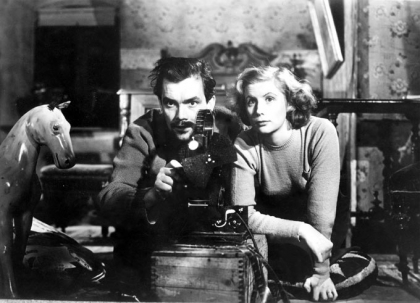 Fängelse: Tomas, författare; namnlös filmregissör
Fängelse: Tomas, författare; namnlös filmregissör
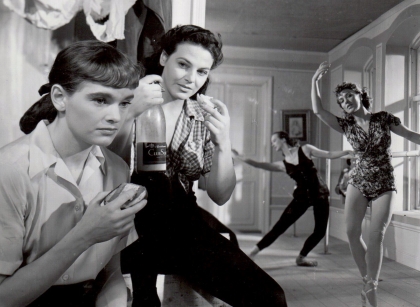 Törst: Bertil, konsthistoriker; Rut, f.d. balettdansös
Törst: Bertil, konsthistoriker; Rut, f.d. balettdansös
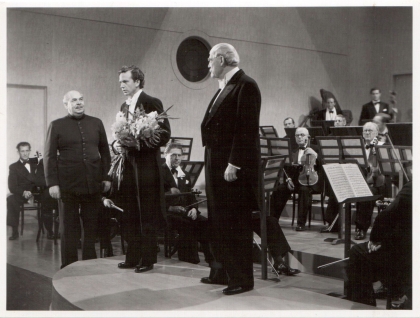 Till glädje: Stig, violinist; Marta, violinist; Söderby, orkesterledare
Till glädje: Stig, violinist; Marta, violinist; Söderby, orkesterledare
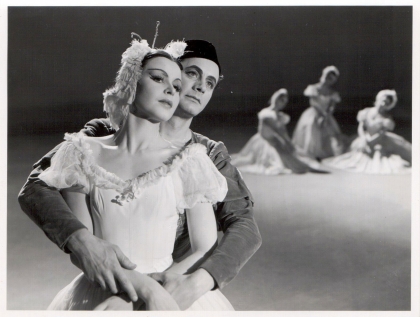 Sommarlek: Marie, balettdansös
Sommarlek: Marie, balettdansös
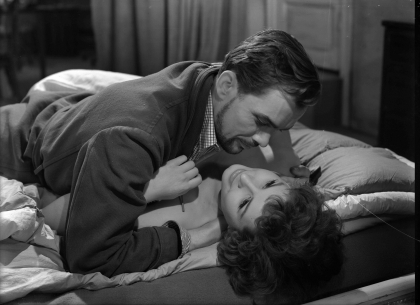 Kvinnors väntan: Martin, konstnär
Kvinnors väntan: Martin, konstnär
Gycklarnas afton: Albert, cirkusdirektör; Frost, clown; Alma, clown; Anne, cirkusryttare
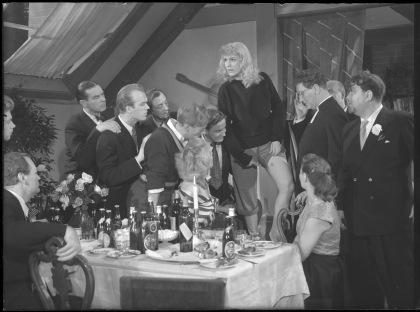
En lektion i kärlek: Carl-Adam, konstnär
Kvinnodröm: Susanne, modellagent; Doris, fotomodell
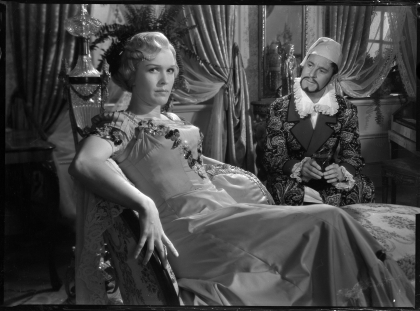 Sommarnattens leende: Desirée, skådespelare; Henrik, amatörpianist
Sommarnattens leende: Desirée, skådespelare; Henrik, amatörpianist
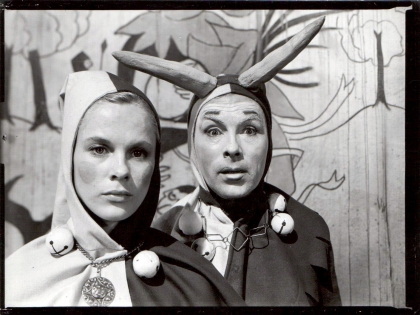 Det sjunde inseglet: Jof, jonglör; Mia, skådespelare; Skat, skådespelare
Det sjunde inseglet: Jof, jonglör; Mia, skådespelare; Skat, skådespelare
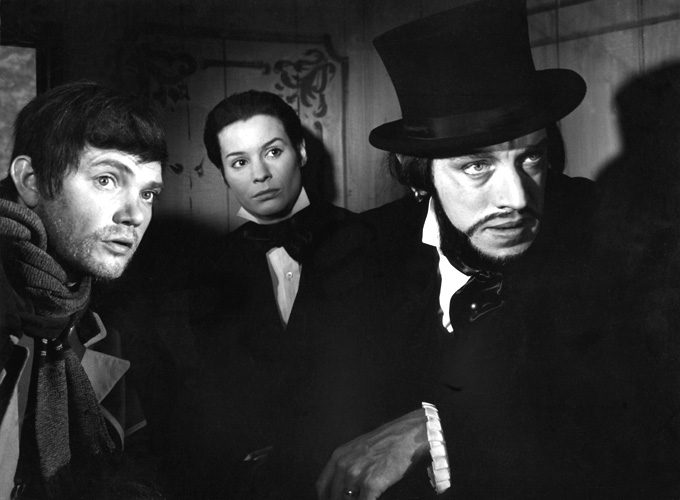
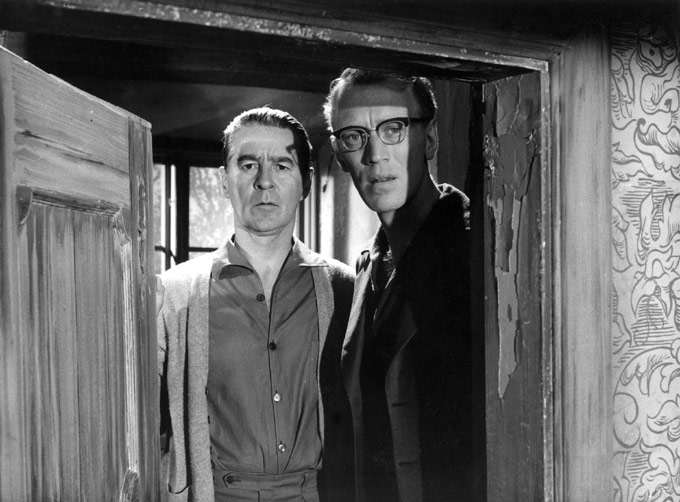
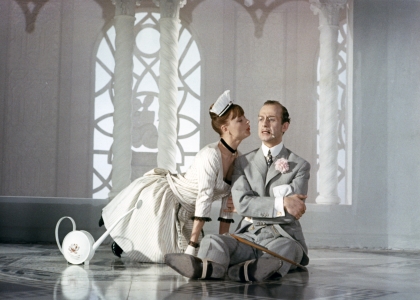 För att inte tala om alla dessa kvinnor: Felix, död musiker; Cornelius, författare
För att inte tala om alla dessa kvinnor: Felix, död musiker; Cornelius, författare
Persona: Elisabet, skådespelare
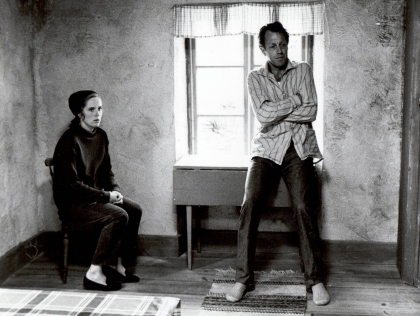 Skammen: Jan, musiker; Eva, musiker
Skammen: Jan, musiker; Eva, musiker
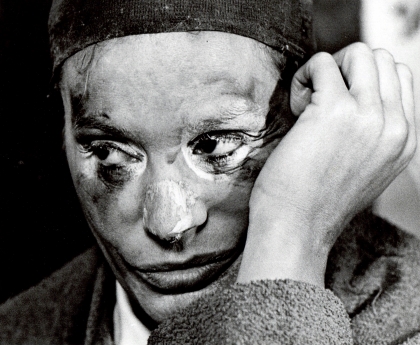
Riten: Hans, Thea och Sebastian, gycklarsällskap

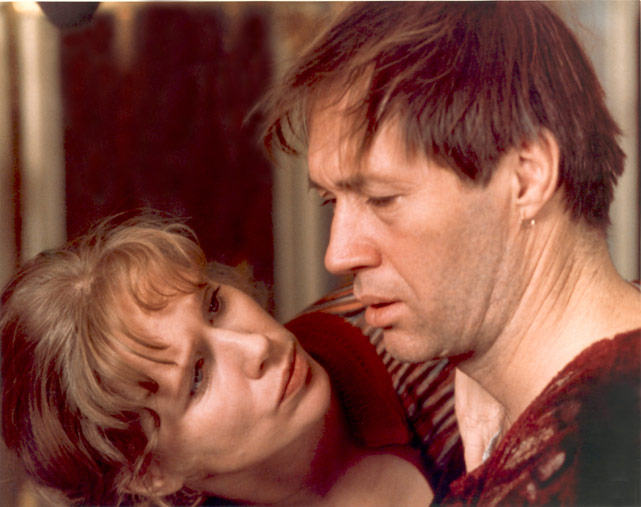
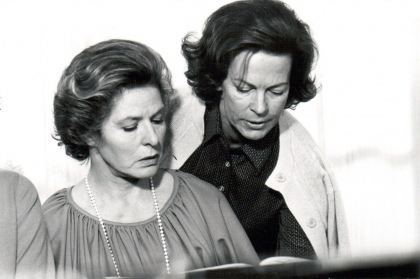
Höstsonaten: Charlotte, konsertpianist
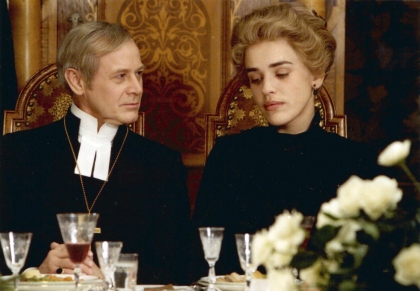 Fanny och Alexander: Emilie, skådespelare; Oscar, teaterdirektör; Helena, skådespelare
Fanny och Alexander: Emilie, skådespelare; Oscar, teaterdirektör; Helena, skådespelare
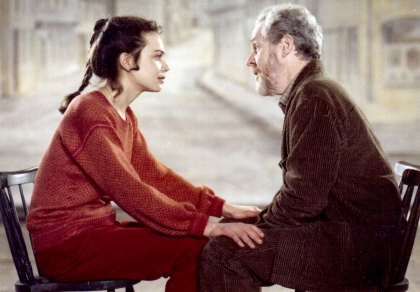 Efter repetitionen: Henrik, regissör; Rakel, skådespelare; Anna, skådespelare
Efter repetitionen: Henrik, regissör; Rakel, skådespelare; Anna, skådespelare
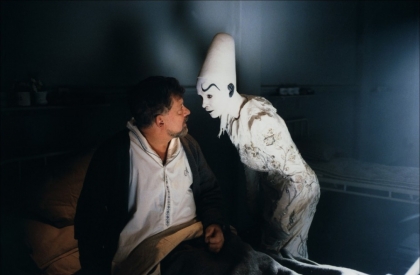 Larmar och gör sig till: Carl Åkerblom och Osvald Vogler, filmförevisare
Larmar och gör sig till: Carl Åkerblom och Osvald Vogler, filmförevisare
